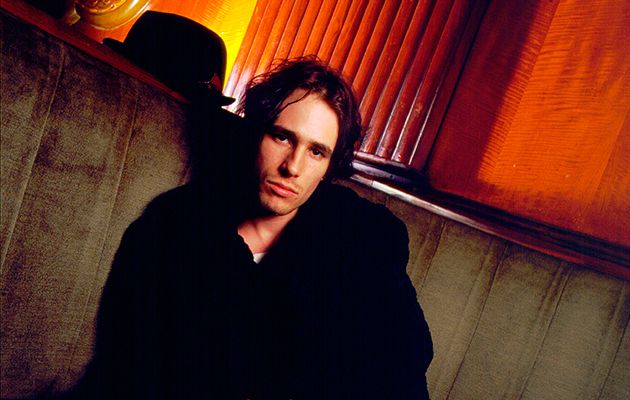ADDABBO: He’d come in around one o’clock and we’d work until eight or nine. He was performing and singing the whole time, so it was quite a long stretch each day.
DAVE LORY (manager, 1993-1997): He was all about the live stuff, not so much recording at that stage. He would jump off a cliff and I would say, “Have you got a parachute?” and he’d reply, “I think so!” It was part instinct, but mostly that he really knew what the hell he was doing. He was the only artist I trusted 100 per cent blindly.
ADDABBO: There was such an immediate emotional connection. When he started to sing he just went someplace else. He could go from a blues growl to an incredible soprano, Led Zeppelin to “Ave Maria”. He had the octaves! I had to make sure he wasn’t screwing up my mic settings, because he would go from a whisper to waaarrrgh. I’d go diving for the dials. It was pretty humbling to be in the vicinity and hear what he could do. I specifically remember wondering what path we should take, because he could do so much it was almost like a curse. To make a record you have to have an artistic direction, and he had so many facets. So that was part of the purpose of the sessions: “What do we have? What have I signed?” It was fascinating to be there.
BERKOWITZ: There was no plan. I had seen him play so many times, and as the sessions went on I was making a list of the songs he had done. I might suggest others, or he might bring something up. He would move around, he would start, he would stop, he would start again. I might say, “Wanna do it again? Wanna try it slower?” It was loose, like a conversation in someone’s living room.
ADDABBO: I was not producing him by any means. We were just letting him do whatever he felt like. A song wouldn’t necessarily be done the same way twice. It might be much faster, or slower, or he’d move his capo up. Sometimes he would just grab stuff out of the air and do something in a way he’d never done it before. “Just Like A Woman” was like that. He seemed to decide to sing it only after he’d started playing.
TIGHE: We had discovered Blonde On Blonde and Astral Weeks around that time. That’s when he was really getting into those records. I remember he was house-sitting for someone in the West Village, and we would listen to those albums all the time at her place. We also bonded over rural blues, particularly Bukka White. He played all these songs at his solo shows.
BERKOWITZ: “Calling You” was a very popular live song for him. The movie it was from [Bagdad Cafe] was kind of underground, but people knew the song. It was like a hit that hadn’t been a hit. Those beautiful vocal curlicues at the top of “Calling You” are part of him discovering his own voice and letting it fly. I call it the “Flying Buckleys”, his own version of that Roy Orbison or Tony Bennett [crescendo]. It was like a delicious exercise machine, that song. It felt like a great relief on his part to get that part of his voice going.
ADDABBO: Then it’d be on to The Smiths!
TIGHE: Jeff always thought that Morrissey was one of the best, if not the best, lyricists. He continued to do both of The Smiths’ songs on You And I with his band well into 1996. Sometimes at the end of a show he would throw in “I Know It’s Over” with “Hallelujah” as an encore.
STEVE ABBOTT (label boss at Big Cat, which released the “Live At Sin-é” EP outside the US): He was a big Smiths fan. It was perfect for him, route one: intelligent/controversial lyrics, great guitar lines, and a character out front. He liked the British and Irish thing. He loved The Rolling Stones, he loved Pin Ups by Bowie; that was a record he knew backwards. He loved punk, he loved British indie. At this time, he really loved Lush and the Cocteau Twins.



